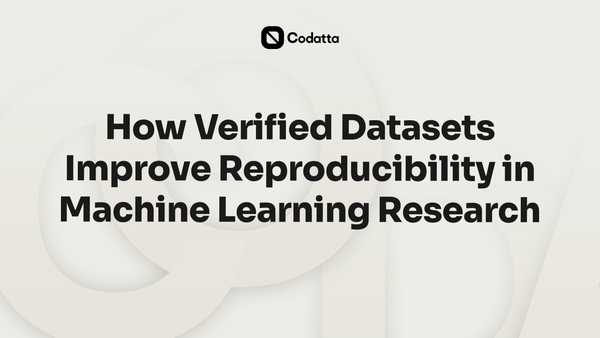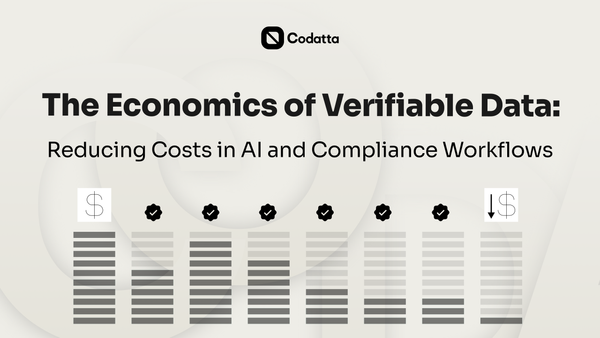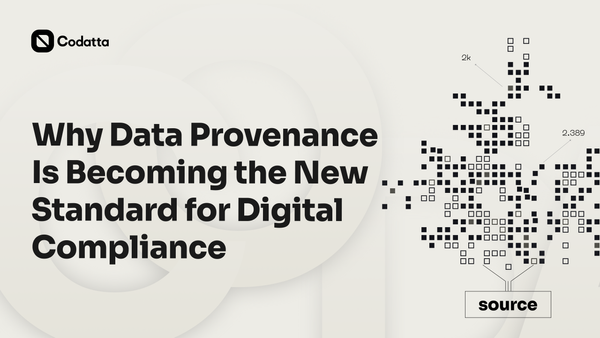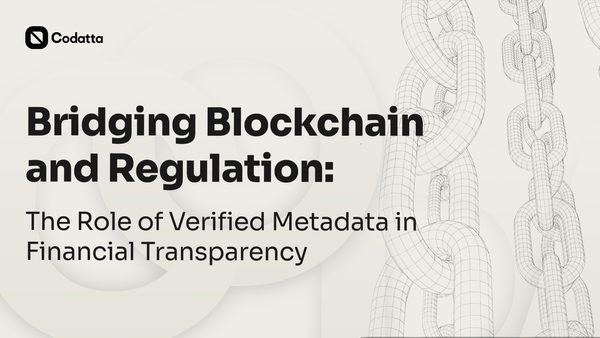Open vs. Closed Data Models: Why Decentralized Protocols Win Long-Term
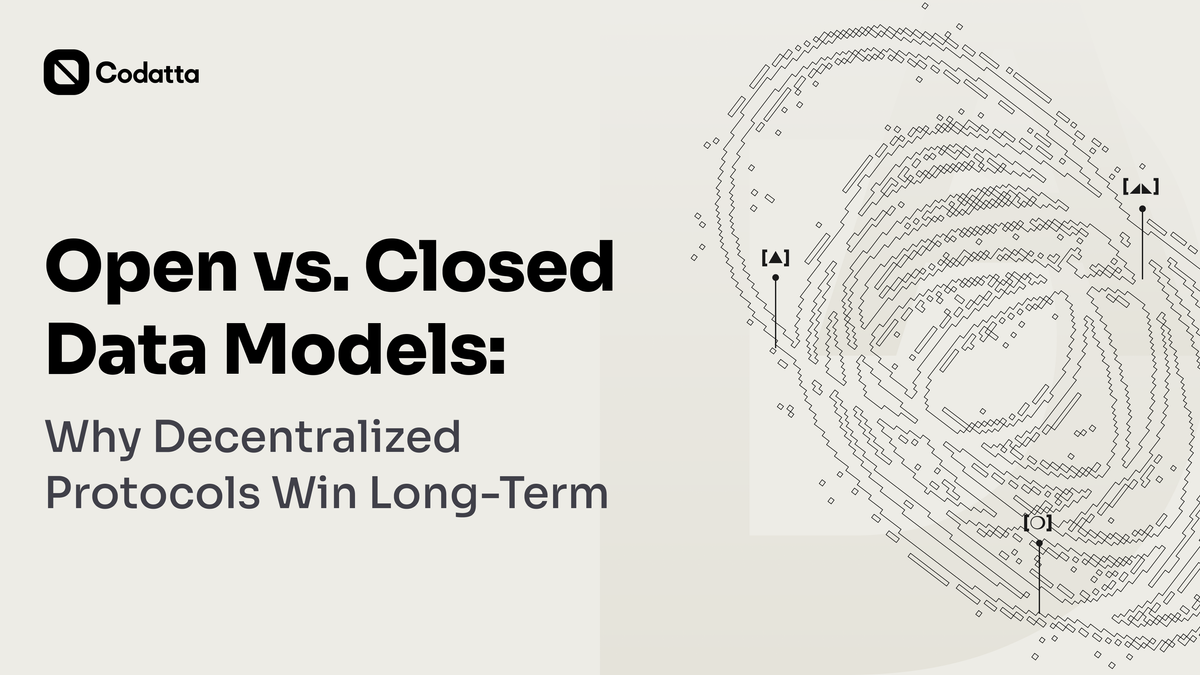
Most AI systems today are built on closed, proprietary datasets controlled by a few companies and hidden from public verification. This limits transparency, collaboration, and long-term progress. Open data models make knowledge accessible, traceable, and reusable across projects. Decentralized protocols like Codatta take this a step further by creating an open, verifiable layer where data quality and provenance are secured by design.
In this article, we explore why open data wins long-term and how Codatta is building the infrastructure to make it possible.
What Closed Data Models Get Wrong
In centralized systems, data often lives in isolated silos under the control of a single entity. These silos limit collaboration, create single points of failure, and raise costs for integrating across systems. Because data is locked in proprietary models or API endpoints, many organizations struggle with interoperability, access restrictions, and opaque decision-making.
One of the key weaknesses of closed models is a lack of provenance. It becomes difficult to trace where data came from, who modified it, or how trustworthy each change is. Proprietary datasets may also reinforce bias if the system cannot be audited, leaving errors and skewed training data unchecked. In artificial intelligence projects built on closed data, users cannot verify quality, which erodes confidence in model outputs.
Real-world examples highlight these pitfalls. In 2024, a study revealed that many datasets used to train large language models lacked transparency, making it nearly impossible to audit biases or validate quality. Companies that treat data as a proprietary asset have also faced backlash when users demanded insight into how models were trained and what data was used.
In closed systems, data becomes a bottleneck rather than an asset. Because access is restricted and validation is opaque, value created in one area cannot easily transfer across the ecosystem. Decentralized platforms that embrace openness, especially in blockchain and crypto, offer greater resilience, shared innovation, and improved user experience.
The Case for Open and Decentralized Data
Open data models are designed around shared verification, reproducibility, and accountability. They allow anyone to trace where data came from, how it was processed, and how it is used in AI and analytical systems. This transparency builds trust and makes results easier to reproduce across teams and industries. The FAIR principles (Findable, Accessible, Interoperable, and Reusable) remain a global standard for ensuring that scientific and technical datasets maintain integrity and long-term usability.
Decentralized systems expand these ideas through blockchain-based validation and transparent data provenance. Instead of depending on a single organization or platform, decentralized protocols record contributions across a network of nodes, where each entry is time-stamped and verifiable. This ensures that user data, financial data, and AI training inputs remain traceable and tamper-resistant. In decentralized finance (DeFi), for example, this model has already proven its ability to secure transactions and improve auditability across multiple protocols.
When applied to AI and data infrastructure, decentralization helps maintain both accuracy and privacy. Techniques such as confidence scoring, cross-verification, and on-chain provenance enable the creation of datasets that are verifiable and resistant to manipulation. These decentralized approaches to data exchange and validation strengthen the reliability of AI models trained across finance, healthcare, and research.
Importantly, open and decentralized data models do not remove governance or accountability. Instead, they make oversight transparent and enforceable. Every contributor can see how data is accessed, validated, and reused. This balance between transparency and control is what ensures long-term sustainability in data ecosystems.
Codatta follows these decentralized principles to build open, high-confidence datasets that power AI and blockchain applications. Its protocol connects contributors, verifiers, and algorithms in a transparent validation flow that maintains both provenance and data quality across multiple domains.
How Codatta Implements This Vision
Codatta’s protocol is designed to make open collaboration secure, scalable, and verifiable. It operates as a decentralized, open-source data network that connects verified contributors through structured metadata provenance and algorithmic validation. This approach allows data to move across multiple domains in real time while maintaining traceability and accessibility.
Each submission within the protocol is recorded with a transparent audit trail that confirms contributor identity, validation status, and data lineage. This ensures that every dataset entry can be reviewed, verified, and reused across AI deployment, research, and blockchain analytics. The use of smart contracts automates contributor rewards and validation workflows, reducing reliance on centralized vs. proprietary systems that limit innovation.
Codatta’s framework leverages both human expertise and automated scoring to maintain quality at scale. Verified contributors review and annotate data, while AI-assisted checks confirm accuracy and detect inconsistencies. The system tracks contributor reputation, rewarding those who consistently meet quality benchmarks and strengthening overall dataset integrity.
In this model, contributors are not limited to one-time participation. They remain part of an evolving network where high-quality annotations continue to generate value over time. This ensures that dataset reliability grows with every new submission, reinforcing Codatta’s long-term vision of transparent, decentralized data collaboration for AI and blockchain ecosystems.
Long-Term Advantages of Decentralized Data Protocols
Decentralized data protocols bring sustainability in how data is used and evolves over time. Instead of data becoming obsolete or locked behind centralized platforms, it remains usable, traceable, and compliant with transparency standards, even as AI models and deployment methods change. Because on-chain data and metadata provenance are recorded transparently, datasets gain lifetime continuity that closed systems struggle to sustain.
Open, tokenized participation enables an ecosystem that scales with contributor growth rather than corporate control. When contributions, validations, and usage are tied to smart contracts, participants share in long-term value through protocols, rather than being limited to one-time rewards. This structure reinforces data ownership, encouraging ongoing engagement and quality improvement.
In contrast, many centralized data models age out or lose relevance. Centralized platforms can become bottlenecks, especially when user demands, interoperability needs, or cost pressures shift. Protocols that rely on centralized infrastructure often require expensive overhauls or migrations to stay current. Decentralized approaches evolve continuously: updates, governance changes, or expansions can be executed across nodes without breaking the data lineage.
Because decentralized systems record data across multiple nodes and avoid single points of failure, they offer stronger resilience. In crypto and decentralized finance (DeFi), decentralized data protocols align well with decentralized exchanges and open standards. They support use cases where data from finance, research, or AI models is shared in real-time across observers, with built-in auditability and accessibility.
Over time, value shifts from data as a proprietary asset to data as a living network. Protocols that enable open-source deployment, multi-protocol integration, and data across sectors lead to lasting platforms. For AI, this means models can be retrained or updated using evolving datasets; for blockchain, it means data produced in one domain can be leveraged in another without friction.
In summary, decentralized protocols win long-term because they combine transparency, scalability, resilience, and shared incentives. They avoid the stagnation common in centralized systems and support a future where data drives innovation, not gatekeeping.
Conclusion
The future of AI depends on a reliable and open data infrastructure. As the debate between centralized and decentralized systems continues, it’s becoming clear that sustainable progress in AI relies on transparency, shared verification, and fair participation. Decentralized AI protocols build this foundation by allowing contributors, developers, and organizations to collaborate through open-source models that preserve data privacy and traceability.
Codatta represents this shift in practice. Through decentralized validation, verifiable metadata, and transparent incentive structures, it creates an environment where data remains accurate, accessible, and trusted. Instead of relying on a single authority or centralized platform, Codatta’s model leverages the same principles that made Ethereum and cryptocurrency ecosystems resilient, distributed governance, accountability, and continuous evolution.
In the long run, open and decentralized data systems are not just an alternative to centralization; they are the only sustainable path for building trustworthy AI.

